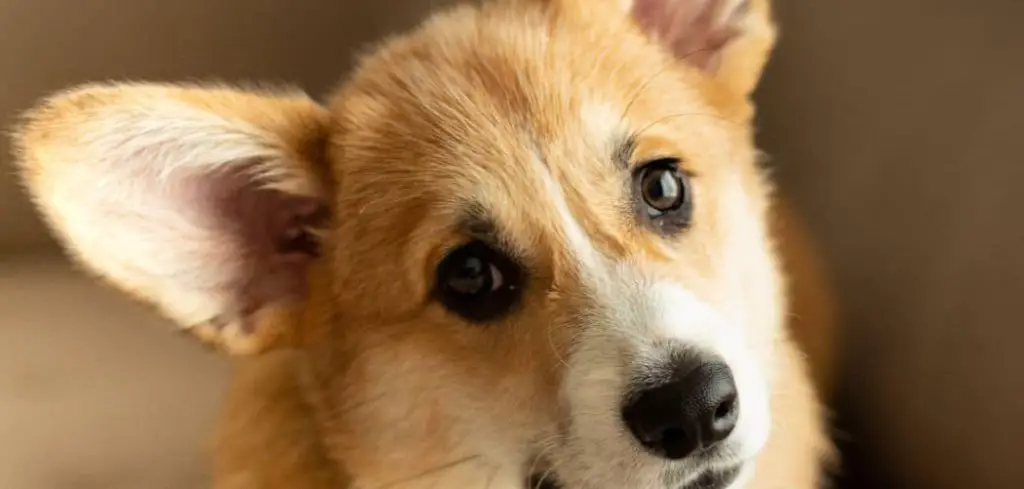It can be alarming to see your dog drooling more than usual while obsessively sniffing the air or ground.
This odd pairing of symptoms may seem harmless at first, but they can signal anything from minor irritants to more serious health or behavioral concerns.
We outline the common reasons for a dog drooling and sniffing, what you can do at home, and when to seek veterinary help.
Dog Drooling and Sniffing — Why It Happens
Dogs drool and sniff for many reasons, ranging from natural behavior to underlying health issues. Sometimes, this combination occurs during intense excitement or food anticipation. But when it’s persistent or paired with other unusual signs, it may suggest problems like nausea, oral disease, foreign object ingestion, or even anxiety. Sniffing can also be compulsive or a response to neurological changes.

Dog Drooling and Sniffing: Common Causes
Nausea or Gastrointestinal Upset
When a dog feels nauseated, one of the first signs can be excessive drooling. The body produces more saliva to protect the stomach and esophagus in preparation for vomiting.
At the same time, dogs may sniff obsessively as part of their way of assessing their surroundings for comfort or locating a scent that could help them feel better.
Look for signs like licking lips, swallowing frequently, lack of appetite, or vomiting. Nausea could be caused by dietary indiscretion, motion sickness, or more serious digestive issues.
It’s a concern because persistent nausea can quickly lead to dehydration and discomfort, especially if paired with vomiting or refusal to eat.
Read more: Dog Drooling and Off Balance (Here’s Why)
Dental or Oral Pain
Mouth discomfort is one of the most common causes of excessive drooling in dogs.
Conditions such as periodontal disease, fractured teeth, gum infections, or oral tumors can all trigger constant saliva production.
Dogs may sniff more due to heightened oral sensitivity, as they use scent to explore rather than chewing. Bad breath, difficulty eating, or pawing at the mouth are strong indicators.
Untreated oral pain can lead to infections and eating difficulties. It’s especially serious if drooling has a foul odor or if the dog avoids using one side of their mouth.
Foreign Body in the Mouth or Nose
If a dog has something stuck in its mouth or nasal passage, such as a blade of grass, small toy, or food particle, it may drool and sniff excessively.
The object causes irritation and triggers both salivation and focused sniffing or pawing behavior. Dogs may also sneeze repeatedly or shake their heads.
This is urgent because foreign bodies can cause injury or infection, especially if lodged near the throat or nasal cavity.
Inhaled Irritants or Scents
Strong odors or irritants can overwhelm a dog’s senses, especially with their acute sense of smell. This can include cleaning products, perfumes, smoke, or even certain plants.
Exposure to these can cause excessive sniffing followed by drooling as the body reacts to the irritant.
You might also see coughing, eye redness, or attempts to rub the face. While usually mild, continued exposure or strong chemical agents can lead to respiratory irritation or allergic reactions.
Anxiety or Overstimulation
Some dogs drool when stressed or overstimulated, particularly during new or intense experiences.
Sniffing may increase as they try to assess their surroundings for safety or familiarity.
This is common during car rides, thunderstorms, fireworks, or trips to unfamiliar places. Pacing, whining, and wide eyes may accompany the drooling and sniffing.
When anxiety is chronic, it can escalate into more serious behavioral or physical issues, including digestive upset and compulsive behavior.
Seizures or Neurological Events
In rare but serious cases, excessive drooling and strange sniffing can signal a neurological event.
Some dogs experience “pre-ictal” behavior — odd actions that occur just before a seizure — such as licking, drooling, or frantic sniffing.
You may notice sudden behavior changes, tremors, staring spells, or disorientation.
These episodes require prompt veterinary assessment, especially if they recur or escalate.
What to Do If Your Dog Is Drooling and Sniffing
First, stay calm and observe your dog closely. If the behavior is brief and they seem otherwise healthy, it may be harmless — perhaps linked to a passing scent or excitement.
Check their mouth and nose gently for any visible objects, wounds, or swelling. If you’re unsure or see something stuck, avoid removing it yourself and contact your vet.
Avoid exposing them to new household chemicals or fragrances, and ventilate the area if needed. Watch for any signs of nausea, vomiting, or loss of appetite.
If anxiety seems to be the trigger, try to remove the stressor or offer a calming environment. A quiet room, gentle touch, and calming aids (like pheromone sprays) may help.
Keep your dog hydrated and monitor for other signs like coughing, pawing at the face, or abnormal breathing patterns.
When to Call or Visit Your Vet
Call your vet if the drooling and sniffing last more than an hour without a clear cause.
You should also contact a professional if you notice:
Blood or pus in the saliva
Vomiting or dry heaving
Difficulty swallowing or breathing
Signs of oral injury or pain
Weakness, shaking, or disorientation
Any sudden or severe change in behavior combined with physical symptoms should never be ignored.
Veterinary intervention is especially critical if your dog is drooling excessively and sniffing compulsively, as this could suggest a blockage, toxin exposure, or even seizure activity.
Read more: Dog Drooling and Anxiety (What you need to know now)
Key Takeaway
Dog drooling and sniffing can be innocent — or a red flag for something more serious.
While occasional episodes may simply reflect excitement or exposure to an interesting scent, persistent or intense symptoms should not be overlooked.
Always monitor your dog’s behavior closely and don’t hesitate to seek help if you’re concerned.
Prompt attention ensures your pet stays safe, comfortable, and on the path to feeling better.
